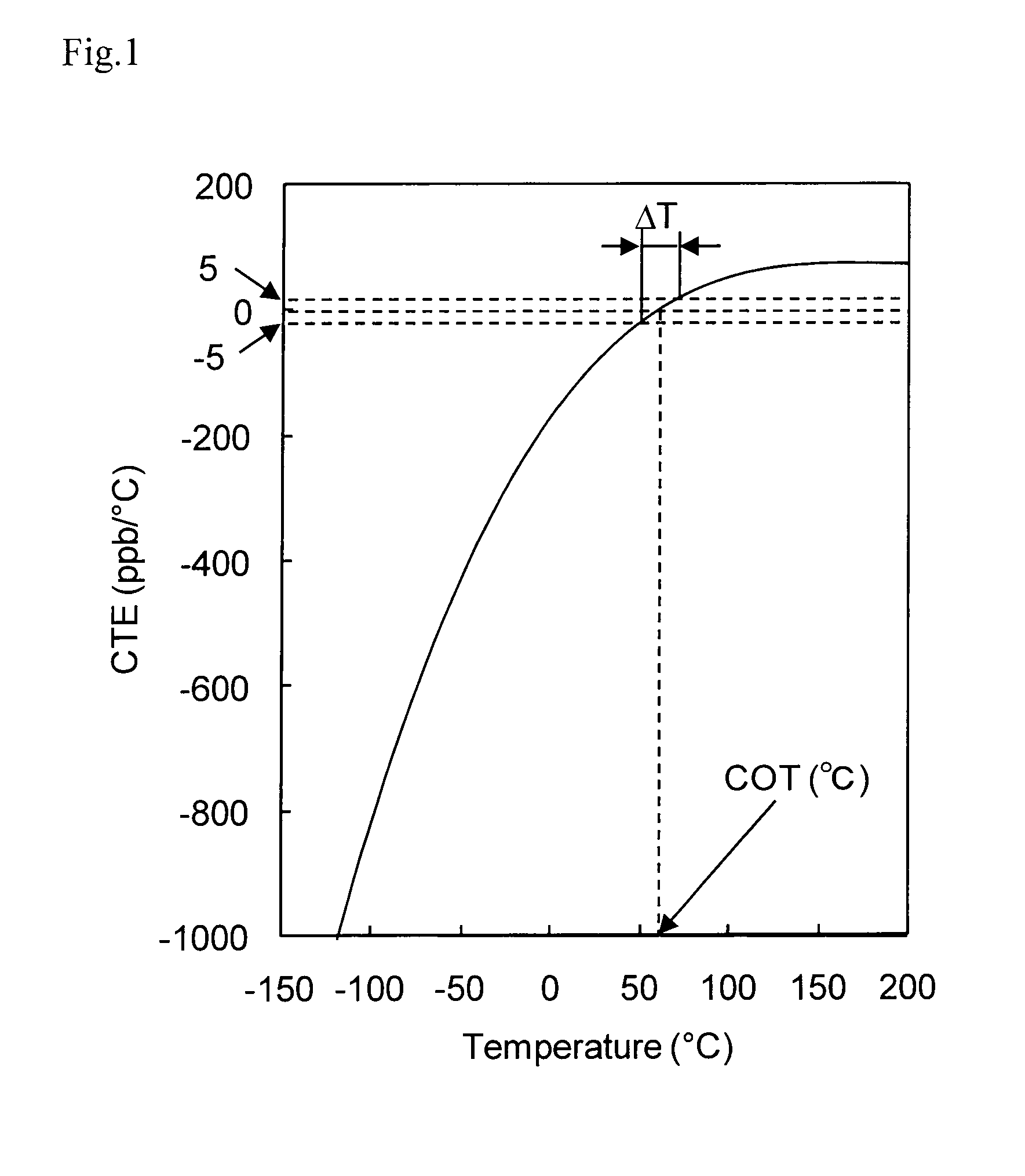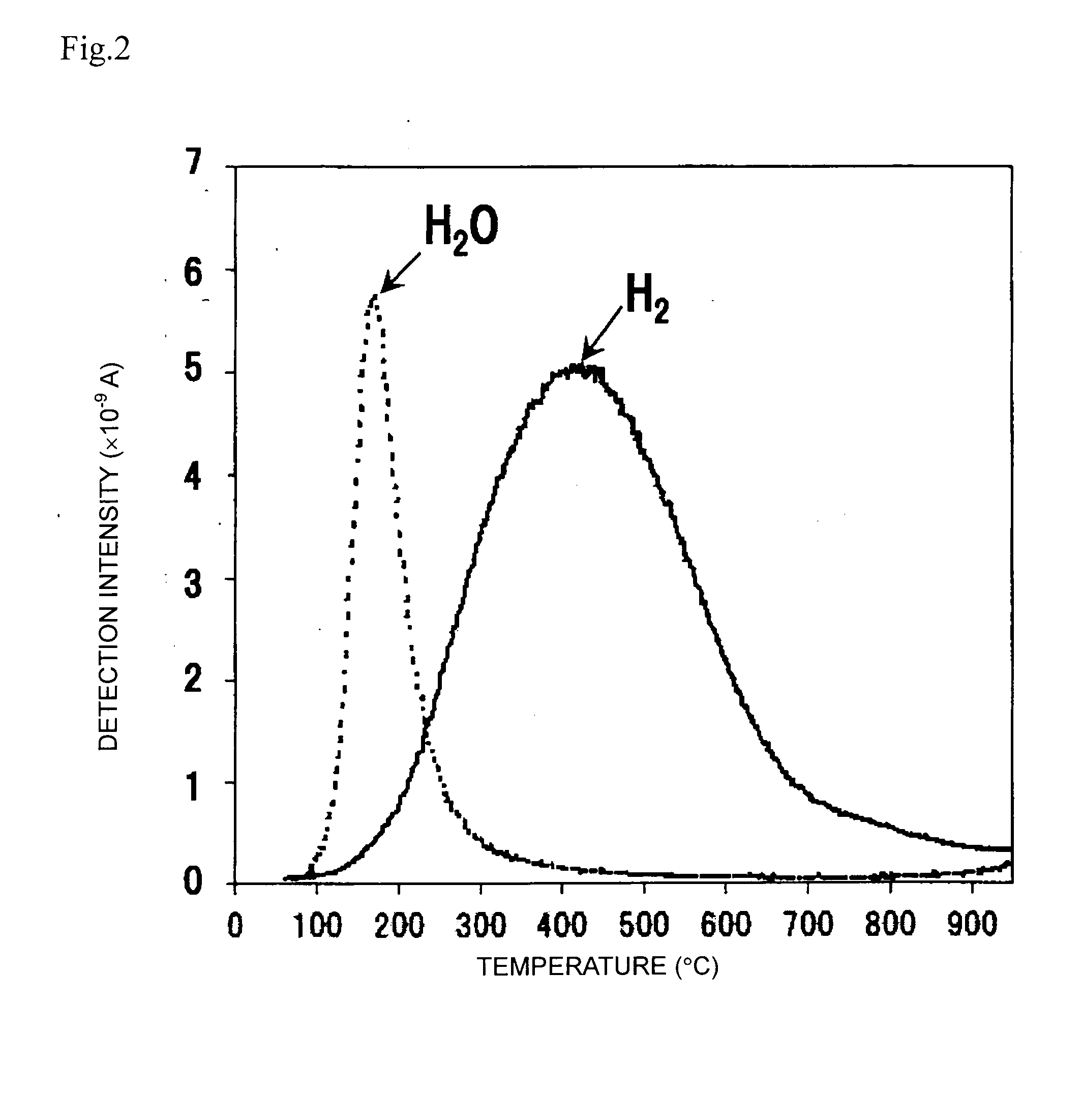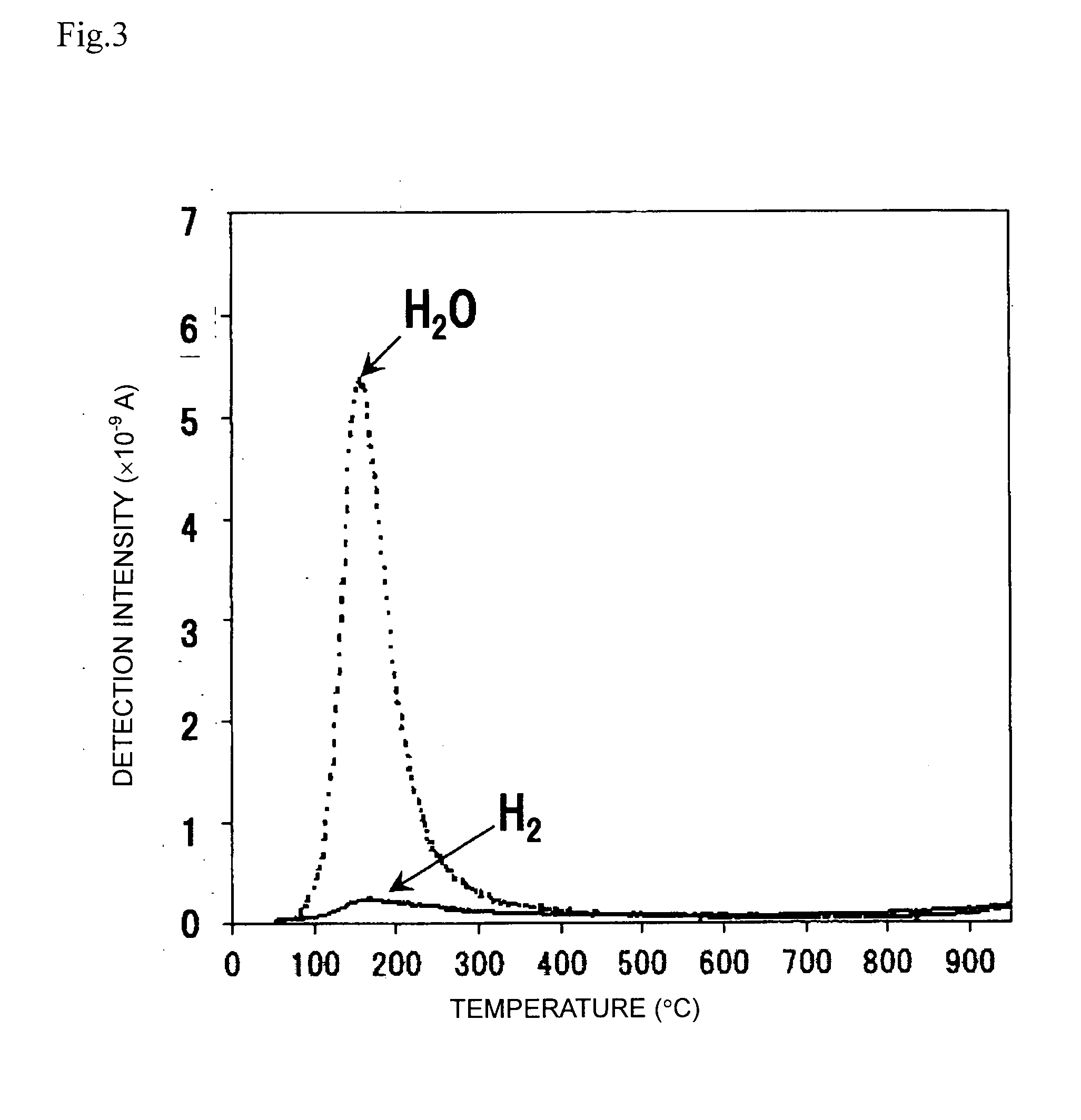Tio2-containing silica glass and optical member for EUV lithography using the same
- Summary
- Abstract
- Description
- Claims
- Application Information
AI Technical Summary
Benefits of technology
Problems solved by technology
Method used
Image
Examples
example 1
[0079]TiO2—SiO2 glass fine particles obtainable by gasifying TiCl4 and SiCl4 each serving as a glass-forming raw material of a TiO2—SiO2 glass, respectively and then mixing them and subjecting the mixture to heat hydrolysis (flame hydrolysis) in an oxyhydrogen flame is deposited and grown on a rotating substrate, thereby forming a porous TiO2—SiO2 glass body (step (a)).
[0080]Since it is hard to handle the obtained porous TiO2—SiO2 glass body without any treatment, the obtained porous TiO2—SiO2 glass body is kept in air at 1,200° C. for 6 hours together with substrate and then separated from the substrate.
[0081]Thereafter, the porous TiO2—SiO2 glass body is placed in an atmosphere-controllable electric furnace, and the pressure is reduced to 10 Torr at room temperature. Thereafter, the temperature is increased to 1,450° C. in a helium gas atmosphere, and the system is kept at this temperature for 4 hours, thereby obtaining a TiO2—SiO2 dense body (step (b)).
[0082]The obtained TiO2—SiO...
example 2
[0086]A TiO2—SiO2 glass body is obtained in the same manner as in Example 1, except that in Example 1, the amount supplied of TiCl4 is increased in the step (a); and that the hydrogen pressure is increased to 10 atmospheres in the step (f).
example 3
[0087]A TiO2—SiO2 glass fine particle obtainable by gasifying TiCl4 and SiCl4 each serving as a glass-forming raw material of a TiO2—SiO2 glass, respectively and then mixing them and subjecting the mixture to heat hydrolysis (flame hydrolysis) in an oxyhydrogen flame is deposited and grown on a rotating substrate, thereby forming a porous TiO2—SiO2 glass body (step (a)).
[0088]Since it is hard to handle the obtained porous TiO2—SiO2 glass body without any treatment, the obtained porous TiO2—SiO2 glass body is kept in air at 1,200° C. for 6 hours together with the substrate and then separated from the substrate.
[0089]Thereafter, the porous TiO2—SiO2 glass body is placed in an atmosphere-controllable electric furnace, and the pressure is reduced to 10 Torr at room temperature. Thereafter, water is charged in a glass-made bubbler; an He gas is bubbled under atmospheric pressure at 100° C.; and the mixture is kept in this atmosphere at 1,000° C. under normal pressure for 4 hours while in...
PUM
| Property | Measurement | Unit |
|---|---|---|
| Temperature | aaaaa | aaaaa |
| Temperature | aaaaa | aaaaa |
| Temperature | aaaaa | aaaaa |
Abstract
Description
Claims
Application Information
 Login to View More
Login to View More - R&D
- Intellectual Property
- Life Sciences
- Materials
- Tech Scout
- Unparalleled Data Quality
- Higher Quality Content
- 60% Fewer Hallucinations
Browse by: Latest US Patents, China's latest patents, Technical Efficacy Thesaurus, Application Domain, Technology Topic, Popular Technical Reports.
© 2025 PatSnap. All rights reserved.Legal|Privacy policy|Modern Slavery Act Transparency Statement|Sitemap|About US| Contact US: help@patsnap.com



